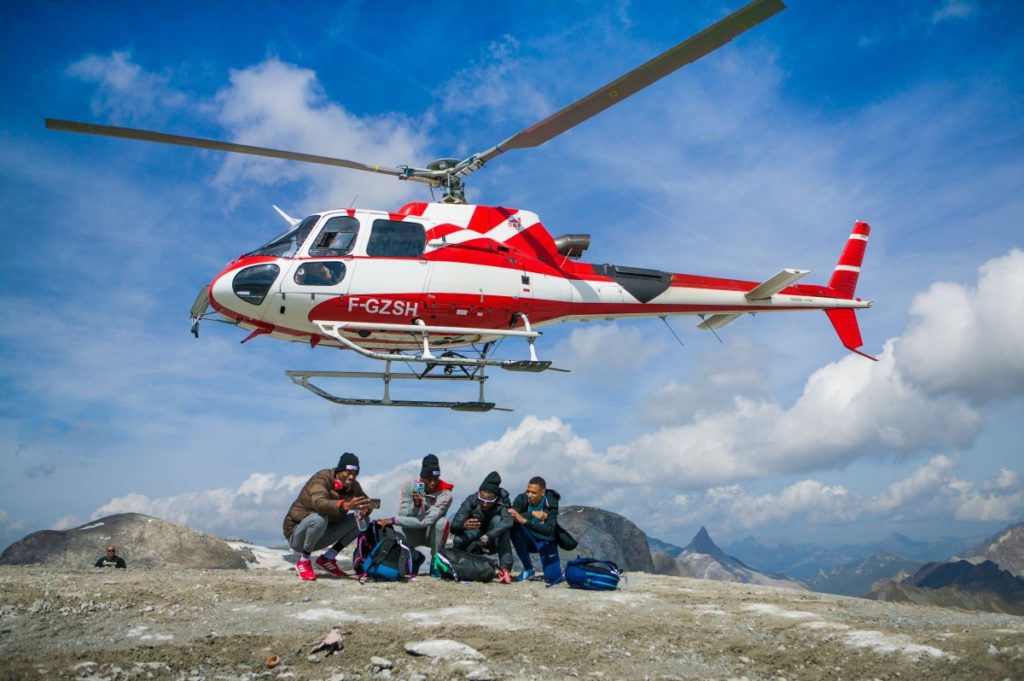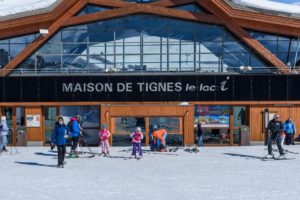The mountains can be a beautiful, yet dangerous place. And if you do not respect the mountains and the security procedures put in place at the resort, the mountains can be fatal.
So it’s important that you understand the risks of riding in order to understand all the safety precautions you need to take to ensure you, and all your friends and family, have the safest and most fun-filled ski trip possible.
The below information is standard mountain safety precautions needed at all ski resorts, but with some parts tailored towards riding in the Espace Killy. If you are reading this for a holiday in any other ski resort, do also be sure to research any resort-specific safety notices.
Understanding Avalanche Risks
Understanding the Weather
Before heading out into the mountains, always check the weather forecast. This not only helps you decide what you’re going to need to wear that day, but also helps you understand any risks at hand. We get loads of beautiful blue sky days in the Espace Killy but weather in the mountains can always be changeable.
You can check the Tignes.net website for extensive weather condition information including snow depth, windspeed, visibility, direction of wind, and the avalanche risk. Here, you can also find out how many slopes and lifts are open – and how many of them are blue, green, red, or black.
One of the most dangerous weather conditions is when it is foggy. This can sometimes make visibility so bad that you can hardly see five feet in front of you. Be aware that it can often be hard to tell how foggy it will be at the top of the mountain when you are at the bottom of the lift, and it can often take you by surprise when you reach the top. If you find yourself in this situation, take it very slowly and as you go further down the mountain the visibility should improve.
It is often the case that it is foggy first thing, but clears up later in the day – so if visibility is not so good that day, try avoiding the highest parts of the mountain until the afternoon. Falling snow or rain can also make it very hard to see.
Be careful when wind speed it high because it can physically push you in certain directions. Just be aware that your control may be compromised.
When it’s sunny, warm weather can be a rider’s dream, but be aware that it may also make the snow thinner and the slopes more icy.
And if the lighting is dull, it can often be harder to see lumps and bumps on the slopes. So if you’re finding that you are not seeing the definition of the slope so well, take it easy and keep your knees soft to prepare for possible unseen bumps.

When you go skiing or boarding be sure to have:
• Skis, boots, bindings, and poles fitted by a trained professional – make sure you book your ski equipment in advance with Chalet Chardons
• A helmet that’s made for skiing/boarding and that fits properly. Keep it on the whole time while skiing and make sure the chin strap is fastened
• Goggles that are the right size and tinted for sun protection. Sunglasses can be worn as an alternative, but don’t give as good protection as goggles – plus falling snow or rain can get in-between your face and sunglasses and impair your vision. Also, try to get good quality goggles because cheap one’s will likely mist up and make it harder to see
• Warm clothing – remember, even if you are warm at the bottom of the lift, it will be much colder when you’re at the top! We’d advise wearing a hat, gloves or mittens, snow pants, a winter jacket, a thermal underlayer, and a snood or balaclava. Opt for an underlayer made from wool or synthetic material rather than cotton, because cotton takes much longer to dry so will make you colder if it gets wet
• Sunscreen and lip balm with SPF of 30 or greater for daytime skiing, even on cloudy days – remember the reflection from the snow makes sun burn even more likely when skiing
• A mobile phone if you need to make an emergency call
• Food in case you get a sugar low halfway up the mountain
• Water so you don’t dehydrate
• A piste map so that you don’t get lost
• Something that tells the time so you don’t lose track of time and remain on the slopes after the closing time of the ski lifts that you need to get home
• Any extra equipment if you are planning on going off-piste – but don’t do this without a guide and thorough advise beforehand!
General Advice
• Do an easy run for your first run of the morning – your muscles need a bit of time to warm up in order to avoid injury
• Remember you will be tired towards the end of the day, so again take it a bit easier. Most accidents happen at the end of the day when everyone’s muscles are a bit more tired
• Avoid listening to music – it’s much safer if you can hear what’s going on around you
• Always be aware of what/who is around you. Don’t cut anyone off and be wary of others if you’re doing long sweeping turns across the whole width of the slope. Also, if your run is about to merge on to another, make sure you look up the mountain to see if anyone is coming down that run. Riders on the run you are merging on to have right of way, so you may even need to stop until you are able to join the run
• Don’t drink alcohol and then ride, for obvious reasons
• Don’t go faster than what you feel comfortable with – there’s no point in trying to keep up with a better skier than you as you’ll just end up falling over. There’s no shame in trusting your gut and going really slowly if you’re suddenly feeling a lack of confidence
• Be aware of ski schools – they’ll be in large groups and can be a bit unpredictable at times
• Don’t ski alone
• Don’t stop in the middle of the slope
• Give yourself plenty of time to get back home, especially as you may be skiing a bit slower for your final run home as your muscles will be tired
Other Mountain Rules
• Don’t leave rubbish on the slopes – you’re in beautiful natural surroundings which deserve your respect and care. Leave only ski tracks, and take only pictures
• Don’t take close up pictures of other people (especially children) without their consent (or their parents’ consent).

• Respect and listen to resort staff and security. Never challenge them if they have decided to close a slope or have given you an instruction – they almost definitely know these slopes better than you and are only trying to keep you safe
Emergencies
Make sure you know what to do in case of an emergency. Take note of the following numbers:
Ambulance: 15 or 112
Firefighters: 18 or 112
Ski Patrol (operates ‘blood wagon’): +33 (0) 4 79 06 32 00 – save this to your phone!
If you witness or an involved in an accident, call the ski patrol and tell them as much information as possible, including the nature of the injury, name of the run, nearest marker number, side of the run (on the left or right, sloping upward or downward).
And our favourite rule is have fun on the mountains and around resort; while you are also staying safe!




